
Politburo member and Prime Minister Pham Minh Chinh visits the exhibition of processed and manufactured products of Hanoi National University, Hoa Lac campus _Photo: VNA
Remarkable results
The 13th National Party Congress took place in the context of the country having undergone 35 years of renovation; the industrialization, modernization and international integration have achieved many great and historic achievements; the national and ethnic potential has been strengthened in all aspects. In the first half of the term, facing many difficulties and challenges, especially the negative impact of the COVID-19 pandemic, the complicated and unpredictable developments in the world and the region, the major policies in the Resolution of the 13th National Party Congress oneducation and training were still focused on by the entire political system, and seriously implemented with a high sense of responsibility, creating positive changes and achieving many important and remarkable results.
First of all, the system of policies and laws on education and training has been reviewed, updated and continued to be improved, gradually removing bottlenecks and obstacles, creating an important legal basis for implementing the policy of fundamental and comprehensive innovation in education and training at all levels and qualifications. In the first half of the term, more than 100 legal documents, guidance documents and directives (1) have been issued, including many important documents, such as the Strategy for Vocational Education Development for the period 2021 - 2030, with a vision to 2045; Decision approving the planning of the vocational education network for the period 2021 - 2030, with a vision to 2045... Many policies have been reviewed, supplemented and newly issued, such as regulations on innovation of general education programs and textbooks; mechanism for collecting and managing tuition fees for educational institutions in the national education system and policies on tuition exemption and reduction, support for learning costs; service prices in the field of education and training; Program "Support for the development of preschool education in disadvantaged areas for the period 2022 - 2030"...
The national education system continues to be improved. The scale of education and the network of educational institutions have developed, opportunities to access quality education have been expanded, better meeting the learning needs of the people. The country has 37,619 public preschool and general education institutions; 18,557 continuing education centers; 4 university preparatory schools; 242 higher education institutions(2); 1,888 vocational education institutions(3)...
Regarding preschool education, the rate of children attending school reached 70.4% (4), in which the whole country has completed universal preschool education for 5-year-old children. 56/63 provinces and centrally-run cities have issued resolutions of the People's Council, detailing policies on preschool education (5).
Regarding general education, the innovation of general education programs and textbooks in the spirit of Resolution No. 29-NQ/TW, dated November 4, 2013, of the 8th Central Conference, Session XI, "On fundamental and comprehensive innovation of education and training, meeting the requirements of industrialization and modernization in the conditions of a socialist-oriented market economy and international integration" and Resolution No. 88/2014/QH13, dated November 28, 2014, of the National Assembly, "On innovation of general education programs and textbooks", has created positive changes, achieving many important and noteworthy results. The new general education program was issued in 2018, implemented nationwide from the 2020-2021 school year in accordance with the roadmap prescribed in Resolution No. 51/2017/QH14, dated November 21, 2017, of the National Assembly, on "Adjusting the roadmap for implementing the new general education program and textbooks according to Resolution No. 88/2014/QH13, dated November 28, 2014, of the National Assembly, "On innovation of general education programs and textbooks". The program has changed from imparting knowledge to orienting the development of students' qualities and capacities; clearly identifying 5 qualities and 10 main, core capacities that need to be developed for general education students; synchronously innovating the content, teaching methods and testing and evaluation. The content of subjects is built in the direction of reducing workload, increasing practice, and linking with real life. System Textbooks and educational materials are compiled, reviewed, approved, printed and distributed on schedule, basically meeting the needs of teaching and learning. The overall quality of education continues to improve. Students develop their initiative and creativity, and teachers play the role of organizers, inspectors and guides. The proportion of children with learning disabilities who have access to education and participate in learning at the primary and secondary levels has increased.
The teaching staff continues to be cared for and developed in both quantity and quality. By the end of the 2022-2023 school year, the percentage of teachers meeting the standards according to the Education Law (2019) at the secondary level is 90.3%, and at the high school level is 99.9% (6). The pedagogical capacity of the majority of teachers has been improved, initially meeting the basic requirements for innovation in teaching content and methods.
The system of facilities and teaching equipment continues to receive investment attention. In the 2022-2023 school year, the rate of solid classrooms will reach 85% (7). The rate of schools with libraries at the primary, secondary and high school levels will reach 92.9%, 88.9% and 86.4% respectively (8). Many organizations and individuals have been mobilized to invest in building private educational facilities, supporting funding to improve facilities, purchase teaching equipment and compile textbooks.

Reading, interaction and team activities space at Doan Ket Primary and Secondary Boarding School for Ethnic Minorities (Trang Dinh district, Lang Son province) _Source: VNA
The scale and network of continuing education institutions have developed diversely, meeting the needs of people for regular and lifelong learning. In the 2022-2023 school year, nearly 16.5 million learners participated in specialized classes to disseminate and update knowledge and skills and other regular training classes at community learning centers (an increase of 2,066,770 learners compared to the 2021-2022 school year and an increase of more than 2,500,000 learners compared to the 2020-2021 school year); 17,367 learners were mobilized to study literacy classes in phase 1 (an increase of 6,366 learners compared to the 2021-2022 school year) and 15,125 learners in literacy classes in phase 2 (an increase of 6,268 learners compared to the 2021-2022 school year). Up to now, nationwide, 76.19% of provincial-level units; 93.62% of district-level units and 97.67% of commune-level units have met the level 2 literacy standards. The rate of people aged 15 - 60 years old who are literate at level 1 and level 2 is 98.85% and 97.29% respectively (9).
Higher education continues to develop in terms of scale and quality, with an increasingly reasonable structure, in line with the requirements of socio-economic development. The number of higher education institutions has gradually increased, and in the 2022-2023 school year (10), it has exceeded the scale determined in the planning according to Decision No. 37/2013/QD-TTg, dated June 26, 2013, of the Prime Minister, "On adjusting the planning of the network of universities and colleges for the period 2006-2020". The management model for higher education institutions is quite diverse (11). The training scale has gradually increased over the past 10 years, reaching approximately 2.1 million university students and 120 thousand postgraduate students, ensuring the quantity and structure of human resources in accordance with the human resource development plan for the period 2011 - 2020. The structure of training sectors has shifted positively, quickly adapting to the needs of the labor market; the number of students in engineering and technology sectors has increased significantly; many new sectors have been opened to meet the development requirements of science, technology and the Fourth Industrial Revolution. The facilities of many universities have been strengthened. Some schools have invested in modern laboratories, well meeting the tasks of teaching, learning and scientific research. The scale and quality of lecturers have been improved. Linking training with scientific research has had many positive changes. The number of works published domestically and internationally, the number of inventions and intellectual property of university lecturers has increased over the years (12).
The quality of higher education has been improved, gradually approaching international standards. By July 2023, the rate of accredited higher education institutions was 79.4%; the rate of accredited training programs was 13% (of which, 6% were internationally accredited). According to the results of the 2021 country rankings in the field of education by US News Magazine (the most prestigious ranking unit in the US on the academic aspect of universities)(13), Vietnam ranked 59th, up 5 places compared to 2020. A number of Vietnamese higher education institutions continued to be highly ranked and increased their rankings on prestigious international rankings. The quality of graduates has gradually improved and better met the requirements of the labor market; the rate of students having jobs after graduation remains high(14); the trust of learners and society in the quality and effectiveness of training has been strengthened(15).
The vocational education system is formed in an open, interconnected direction, basically in line with other countries in the world. The planning of the vocational education network for the period 2021 - 2030, with a vision to 2045, has been issued, creating a basis for arranging, streamlining focal points, and prioritizing investment resources. Training programs, facilities, qualifications, and capacity of teaching staff are gradually standardized and modernized. Many cooperation projects and plans with international organizations and partners have been signed and implemented. Attention has been paid to connecting labor supply and demand. The proportion of workers with vocational training degrees and certificates and the proportion of workers with jobs suitable to their vocational skills and training level have increased. The results of vocational education have significantly contributed to forming a skilled workforce, building a modern working class and farmers to serve socio-economic development and the cause of industrialization and modernization of the country.

Students participate in experiential and creative activities _Source: VNA
Some limitations
Besides important and noteworthy results, the implementation of the goals and tasks of the Resolution of the 13th National Party Congress in the field of education and training still has some limitations:
Firstly, the institutions and policies for education and training development have not been issued synchronously. The issuance of documents for leadership, direction and guidance for implementation is still inadequate, some documents do not ensure requirements on progress and quality, and have content that is not consistent with legal regulations and practical requirements. Important strategies and plans related to education and training for the 2021-2030 period are slow to be approved, affecting the implementation of the Party's guidelines and policies, and the State's policies and laws on education and training development.
Second, the network of preschool education facilities is not uniform among regions, areas, and localities; it does not ensure equal access to education among disadvantaged groups and subjects. The planning, investment, and construction of preschool education facilities in many localities have not kept up with the development requirements and needs of the people. The management of teaching staff and facilities at preschool education facilities and childcare centers, especially in the non-public sector, still has many limitations.
Third, the implementation of the 2018 General Education Program still has many shortcomings, the preparation time is short, the work of ensuring conditions for teachers, facilities, and equipment is difficult and confusing. The compilation, experimentation, appraisal, supply, distribution, and selection of textbooks according to the new general education program still has many shortcomings. The awareness and habits of a number of educational managers, teachers, and students about educational methods, exams, tests, and assessment of learning outcomes are slow to change, not keeping up with the requirements of the new general education program. The organization of educational activities and subjects, such as fine arts and music, have not fully met the set goals and requirements. The construction of subject combinations at the high school level is still inadequate, not fully meeting the requirements of career orientation and the needs of students. The results of innovation in teaching and learning methods in many educational institutions are not high, especially in areas with particularly difficult socio-economic conditions. The situation of local surplus and shortage of teachers and shortage of teachers to teach new subjects is common. The whole country still lacks 62,877 general education teachers (16); there is a local surplus of 5,091 teachers (17). The structure of the teaching staff is not suitable; the quality of teachers is uneven. The recruitment of teachers still faces difficulties and obstacles, especially teachers of music and fine arts who meet the standards.
The state budget has not yet fully met the needs for implementing the innovation of general education programs and textbooks; the proportion of regular expenditures for education is mainly salary expenditures; expenditures for educational activities are generally low, not meeting the requirements of the Program. Most localities, especially those that have not balanced their budgets, have difficulty in funding investment in facilities and teaching equipment. The number of classrooms that have not been solidified is still large, mainly concentrated in areas with difficult socio-economic conditions. There is still a shortage of many classrooms, especially in urban areas and areas with many industrial parks and export processing zones. The rate of meeting the prescribed standards for teaching equipment nationwide is low, on average meeting only 54.3%.
Fourth, the quality of continuing education is still limited, the quality of "input" is low. The teaching staff is insufficient in quantity and inadequate in structure. Facilities and teaching equipment are still lacking. The rate of mobilizing learners to eliminate illiteracy in border areas, areas with large ethnic minorities, and areas with difficult socio-economic conditions is still low, the results of eliminating illiteracy are not sustainable. The work of investigating and reviewing the number of illiterates is not taken seriously, the data is not updated regularly and is not accurate.
Fifth, the development and promulgation of a plan for the network of higher education and pedagogical institutions to 2030, with a vision to 2050, is behind schedule. The number and scale of higher education institutions are limited and unevenly developed; many schools are small, have narrow training fields and operate ineffectively. The scale of training and the ratio of university students per 10,000 people are lower than some countries with similar conditions in the region and in the world (18). The scale of postgraduate training in our country is still low and has not increased for many years (19), especially postgraduate training in the field of integrated science, technology, engineering and mathematics (STEM) has a tendency to decrease sharply (20). Some important fields for the country's sustainable development, such as natural sciences, agriculture, forestry, fisheries, etc., face difficulties in enrollment. The infrastructure of most Vietnamese higher education institutions is still low compared to other higher education institutions in the region and the world. The student/lecturer ratio and the percentage of lecturers with doctoral degrees are both low compared to the world's common standards (21). In the entire system, about 40% of higher education institutions have less than 20% of full-time lecturers with doctoral degrees or higher.
The quality of education at training institutions is uneven across sectors; there is a clear difference between the leading schools in major cities and those in the provinces. The gap between the results of assessment and classification of training quality in schools and the practical requirements of employers is still quite large. The trained human resources only meet the needs of the general public, lacking high-quality human resources.
The activities of higher education institutions are under the management of many different agencies, leading to difficulties and obstacles in innovation of university governance, especially in implementing financial autonomy and in terms of organization and personnel. Investment budget for higher education is low, with a tendency to be cut; effective investment strategies with focus and key points have not been identified for the development of higher education institutions. The policy of socializing education has not been effective, and has not really encouraged social components to participate in investing in the development of higher education. Research activities of universities are not closely linked to practice, market requirements, and low applicability. The ratio of articles and scientific works published per number of lecturers in Vietnam is still low compared to the world average (22).
Sixth, the scale of vocational education is still small; the structure of industries, occupations, and training levels are not suitable; the quality and effectiveness of training are not high, especially in training high-quality human resources, new industries, occupations, and advanced skills. The connection between the State - schools - enterprises is not tight. The forms and methods of organizing training are slow to innovate, not diverse and flexible enough to promptly meet the needs of the labor market. Retraining and regular training for workers have not been focused on, and have not created opportunities and encouraged workers to participate in lifelong learning. The transfer and expansion of programs according to international standards are still difficult and lack uniformity. Many vocational training institutions are not active and proactive in transforming the structure of industries, occupations, and innovating training programs. Investment resources for vocational education are not commensurate; facilities and equipment for teaching, experimenting, and practicing are still poor.
The above limitations are mainly due to the fact that the awareness of a number of educational managers and teachers about the meaning and importance of fundamental and comprehensive innovation in education and training is not complete, profound and comprehensive. The qualifications and professional capacity of a number of officials and teachers are still limited. The role and responsibility of heads of advisory agencies in some localities are not clear; they are not resolute and timely in handling and removing difficulties and obstacles that arise. Propaganda and dissemination work has not been given due attention. Forecasting, planning and roadmap for innovation are not close. Coordination between central and local ministries and branches is not close and regular. State budget investment in education and training has not met practical requirements. Policies and incentives have not met the requirements of attracting and retaining teachers and lecturers, especially high-quality human resources. There is no breakthrough policy to encourage and attract non-state resources to participate in education and training development.

Students practice programming to control robotic arms at the HNIVC-FUNA Smart Manufacturing Training Center of Hanoi Industrial College in collaboration with international partners _Source: VNA
Some key tasks and solutions from now until the end of the term
Faced with the requirements and tasks set forth in the new period, to more effectively implement the Resolution of the 13th National Party Congress, from now until the end of the term, it is necessary to focus on synchronously and effectively implementing the following tasks and solutions:
Firstly, continue to strengthen leadership and direction, improve the effectiveness and efficiency of state management in the field of education and training.
Fundamental and comprehensive education reform is a major policy of our Party and State, a particularly important, complex, sensitive issue with a large scope of impact. Therefore, to ensure the successful implementation of the set goals and tasks, it is necessary to continue to strengthen the leadership of the Party, the management of the State, promote the strength of the entire political system, the initiative and creativity of the people and the whole society. In the coming time, it is necessary to strengthen the implementation in a more thorough, extensive and effective manner of propaganda and dissemination of the goals, requirements and contents of education and training reform, especially for leaders at all levels, education managers and teachers, creating unity and clarity in leadership, direction and implementation; creating trust, consensus and support from all walks of life. Continue to innovate state management in the field of education and training towards increasing decentralization, delegation of authority, promoting autonomy, ensuring the role of creation for educational development. Strengthen inspection, examination, supervision; improve the effectiveness and efficiency of internal inspection activities of educational institutions associated with accountability. Promote digital transformation, administrative reform, application of information technology, international integration, attract and effectively use foreign support resources for education and training.
Summarize and evaluate the arrangement, consolidation of the organizational apparatus and management, and improvement of the quality and efficiency of public service units. Continue to affirm and clarify the role of state management over universities, especially the issue of quality management; develop key training and research centers; develop specific fields, such as investment in basic science, serving the armed forces, and special sectors, such as pedagogy, medicine, meteorology, etc.
Second, continue to improve institutions and policies in the field of education and training.
Continue to institutionalize the Party and State's viewpoints and policies on education and training development and improve the effectiveness of implementation. Timely complete mechanisms and policies to promote and improve the quality and effectiveness of scientific research and technology transfer of educational and training institutions; closely link training with research, deployment and application of new scientific and technological achievements; form excellent research centers and strong research groups. Timely issue important documents of an orientational nature, such as the Education and Training Development Strategy for the period up to 2030; planning the network of higher education and pedagogical institutions; planning a system of specialized educational institutions for people with disabilities and a system of centers to support the development of inclusive education for the period up to 2030, with a vision to 2050. Continuing to institutionalize the Party's policies on the field of education and training, such as clearly defining the work of state management and administration of educational institutions according to Conclusion No. 51-KL/TW, dated May 30, 2019, of the Secretariat, on continuing to implement Resolution of the 8th Central Conference, Session XI, "on fundamental and comprehensive innovation of education and training to meet the requirements of industrialization and modernization in the conditions of a socialist-oriented market economy and international integration"; Directive No. 21-CT/TW, dated May 4, 2023, of the Secretariat, "on continuing to innovate, develop and improve the quality of vocational education up to 2030, with a vision to 2045". Complete the system of documents guiding the implementation of new contents in the 2019 Law on Education and the Law on amending and supplementing a number of articles of the 2018 Law on Higher Education. Summarize and evaluate difficulties and obstacles in the implementation of the Law on Education to remove obstacles related to the autonomy mechanism and accountability of educational institutions. Quickly develop and promulgate the Law on Teachers to specify the preferential treatment policy, take care of building a team of teachers and educational managers, and attract high-quality human resources for the education sector.
Third, fundamental and comprehensive innovation in education and training needs to be more closely linked with key tasks and strategic breakthroughs in the spirit of the 13th National Party Congress.
For preschool education, it is necessary to focus on effectively implementing Directive No. 29-CT/TW, dated January 5, 2024, of the Politburo, "on universal education, compulsory education, eradicating illiteracy for adults and promoting student streaming in general education", in which priority is given to universalizing preschool education for preschool children from 3 to 5 years old in the direction of continuing to invest in developing and expanding the network of public preschools; at the same time, improving the quality of child care and education. Improve the capacity of preschool teachers, increase salaries and incomes for preschool teachers. Promote socialization; supplement and perfect policies in a more attractive direction to attract investment in developing the non-public preschool system. Strictly manage non-public preschool education facilities, especially independent groups of children; Support training, improve knowledge and child care skills for teachers teaching in independent child care groups, independent kindergartens, and independent preschools.
For general education, continue to effectively implement the 2018 General Education Program according to Resolution No. 686/NQ-UBTVQH15, dated September 18, 2023, of the National Assembly Standing Committee, "on supervising the implementation of Resolution No. 88/2014/QH13 and Resolution No. 51/2017/QH14 of the National Assembly on innovation of general education programs and textbooks". In particular, focus on thoroughly resolving the situation of surplus and shortage of teachers; ensuring adequate facilities and teaching equipment; continuing to innovate teaching methods, testing, examination and assessment methods. Effectively implement Directive No. 08/CT-TTg, dated May 1, 2022, of the Prime Minister, "on strengthening the implementation of school culture building". This is a major policy that needs to be persistently organized and implemented.
For higher education, it is necessary to implement breakthrough solutions to improve the quality of higher education associated with increasing appropriate scale, having a reasonable industry and profession structure. One of the key solutions is to overcome difficulties and inadequacies in regulations on university autonomy, in the direction of going into depth, being substantive associated with implementing accountability, publicity and transparency of information. Attracting high-quality, highly qualified human resources to become university lecturers. Having reasonable scholarship policies to attract excellent students to a number of important fields, serving the sustainable development of the country. Strengthening and improving the quality of scientific research in universities. Investing in and developing a system of facilities serving research and teaching for a number of key universities; developing a startup ecosystem; focusing on digital transformation....
For vocational education, arrange the network of vocational training institutions; clearly identify the basic groups of majors and occupations that need training; ensure the quality of vocational training, especially the basic skills and knowledge to participate in the labor market. Diversify training methods, develop training programs in an open and flexible direction, and reasonably allocate the structure of majors, occupations, levels, regions, and areas, meeting output standards approaching regional and world standards. Strengthen coordination between schools, training institutions, and enterprises, linking training with labor demand; encourage enterprises to participate in vocational training, and solve employment for workers after training. Promote forecasting of vocational training needs, prioritizing new technology and high-tech industries and occupations.
Fourth, increase investment, ensure facilities and teaching equipment, improve quality, standardize teaching staff and educational management staff.
Focus resources, increase investment in education and training, ensure that "education is the top national policy". Have a systematic and serious investment strategy for higher education and vocational education commensurate with developed countries in the world, meet the requirements of the labor market, and improve national competitiveness. Promote the attraction of social resources, integrate with national target programs to increase investment in building facilities and teaching equipment to ensure good implementation of the 2018 General Education Program. Improve the quality and standardize the team of teachers and educational managers at all levels, including teachers of ethnic minority languages. Continue to implement the roadmap to improve the training standards of preschool, primary and secondary school teachers according to regulations.
There are appropriate policies to promote the development of higher education and vocational education institutions, improve the quality of training activities, scientific research and serve the community. Prioritize investment in the development of a number of higher education institutions and training sectors of regional and international stature; develop a number of specific sectors and higher education institutions with sufficient capacity to carry out national strategic tasks and regional development tasks of the country. Consider concretizing investment support mechanisms according to projects, programs, goals and orders of the State based on the capacity, reputation and quality of training, scientific research and technology transfer of schools, regardless of the type of ownership of higher education institutions and vocational education institutions./.
Associate Professor, Dr. NGUYEN DAC VINH
Member of the Party Central Committee, Member of the Standing Committee of the National Assembly, Chairman of the National Assembly's Committee on Culture and Education
-----------------------------
(1) The National Assembly issued 5 resolutions; the Government, the Prime Minister, ministries and branches issued 7 decrees, 17 decisions, 4 directives, and 65 circulars. In addition, there were 20 decisions of the Minister of Education and Training.
(2) See: Report on the results of implementing tasks for the 2022-2023 school year, directions and key tasks for the 2023-2024 school year, dated August 18, 2023, of the Ministry of Education and Training.
(3) See: Report No. 66/BC-LĐTBXH, dated May 30, 2023, of the Ministry of Labor, War Invalids and Social Affairs, on a number of contents related to the group of questions at the 5th Session, 15th National Assembly
(4) See: Report on the results of implementing tasks for the 2022-2023 school year, directions and key tasks for the 2023-2024 school year, dated August 18, 2023, of the Ministry of Education and Training.
(5) See: Report on the results of implementing tasks for the 2022-2023 school year, directions and key tasks for the 2023-2024 school year, dated August 18, 2023, of the Ministry of Education and Training.
(6) See: Report on the results of implementing tasks for the 2022-2023 school year, directions and key tasks for the 2023-2024 school year, dated August 18, 2023, of the Ministry of Education and Training.
(7) Specifically: for preschool level: 79.5%; for primary level: 82.0%; for secondary school level: 93.7%; for high school level: 96.4% (See: Report on results of implementing tasks for the 2022 - 2023 school year, directions and key tasks for the 2023 - 2024 school year, dated August 18, 2023, of the Ministry of Education and Training)
(8) See: Report No. 584/BC-ĐGS, dated August 11, 2023, of the National Assembly Standing Committee's Supervisory Delegation, on "Implementation of Resolution No. 88/2014/QH13 and Resolution No. 51/2017/QH14 of the National Assembly on innovation of general education programs and textbooks"
(9) See: Report on the results of implementing tasks for the 2022-2023 school year, directions and key tasks for the 2023-2024 school year, dated August 18, 2023, of the Ministry of Education and Training.
(10) Not including schools belonging to the police and military sectors; at the same time, 2 national universities and 3 regional universities have a total of 37 member universities, specifically: Hanoi National University has 9 member universities, Ho Chi Minh City National University has 7 member universities, Thai Nguyen University has 7 member universities, Da Nang University has 6 member universities and Hue University has 8 member universities.
(11) The two national universities directly under the Government have many member universities, member research institutes and affiliated schools and faculties. The three regional universities directly under the Ministry of Education and Training have many member universities, member research institutes, affiliated schools and faculties and may also have distance learning centers. Universities directly under different ministries and sectors have an organizational structure including affiliated faculties and departments. The whole country has 68 schools of state agencies, political organizations, socio-political organizations, and the people's armed forces providing training at all levels of higher education (of which, there are 28 schools under the armed forces, 8 schools performing training and fostering tasks, but are not higher education institutions and 32 schools performing fostering tasks).
(12) The number of scientific works in the Web of Science (WoS) journal increased from 2,107 in 2016 to 7,502 in 2020 (an increase of 3.56 times); the number of articles published in Scopus journals increased from 4,735 in 2016 to 19,888 in 2020 (an increase of 4.20 times).
(13) The US News national education rankings are based on a global survey of three equally weighted attributes of each country: whether it has a well-developed public education system; whether people would consider attending college there; and whether the country offers a top-quality education.
(14) According to an independent survey report by the Center for Human Resource Supply and Development Support (Ministry of Education and Training), the employment rate of graduates tends to increase in the 3 years 2019 - 2021 and reaches the national average of over 90%. According to data from the General Statistics Office, in the period 2020 - 2022, the unemployment rate of workers with university degrees or higher decreased from 4.26% to 3.16%; this rate for master's graduates decreased from 1.3% to 0.6%.
(15) Enrollment results clearly reflect the ability of graduates and social beliefs for quality and effectiveness of training. After a "hot" growth phase, the highest scale of enrollment and training in 2014, but has dropped sharply for 4 consecutive years and to the lowest level in 2018. The reason is that resources have not been invested and developed in commensurate with the scale. The higher education system has clearly recognized this, along with the effort to promote university autonomy, mobilizing investment resources to improve quality, therefore, since 2019, the enrollment results, the training scale have recovered and increased again with a fair increase.
.
. communication ”)
(18) The total number of Vietnamese university students in 2021 was about 2.1 million, reaching 215 students/ten thousand people. Compared to Southeast Asia (ASEAN), this ratio is equivalent to Malaysia and Singapore (after the Philippines, Indonesia and Thailand), but lower than the average of member states of economic cooperation and economic development (OECD): 290/ten thousand people.
(19) The scale of postgraduate training in 2021 of Vietnam reaches approximately 110,000 graduate students and 12,000 graduate students, calculating the ratio of the population is less than 1/3 compared to Malaysia and Thailand, only 1/2 compared to Xin-Po and Philippines, approximately 1/9 times compared to the average level of OECD countries
(20) Master's degree is only over 2%, the doctoral level only reaches approximately 0.3%
(21) The percentage of "rough" students (including postgraduate) in lecturers of our country is 25.6. According to the "Education at A Glance 2022" report of OECD: the "standard" ratio of students on lecturers in OECD countries is 15 (in public schools) and 17 (at private schools). According to the statistics of the United Nations Education-Science and Cultural Organization (UNESCO) (http://data.uis.unesco.org/), the "raw" ratio of students on the average lecturer in OECD countries is 14, while that ratio is in Xin -GA -PO is 13 and Malai-oxi-A is 14. (https://www.hesa.ac.uk/data-and-analysis/staff/table-8), the percentage of lecturers with a doctoral degree is 54.4%. Since 2010, Malaysia has a doctorate of a total of 73%of universities; Sri Lan-Ka in 2015 was 55%. (Report No. 2092/BC-UBVHGD15, dated 20-12-2023, of the Cultural and Education Committee of the National Assembly of the General Assembly of Education Conference 2023 "Institutions and policies to improve the quality of higher education")
.
Source



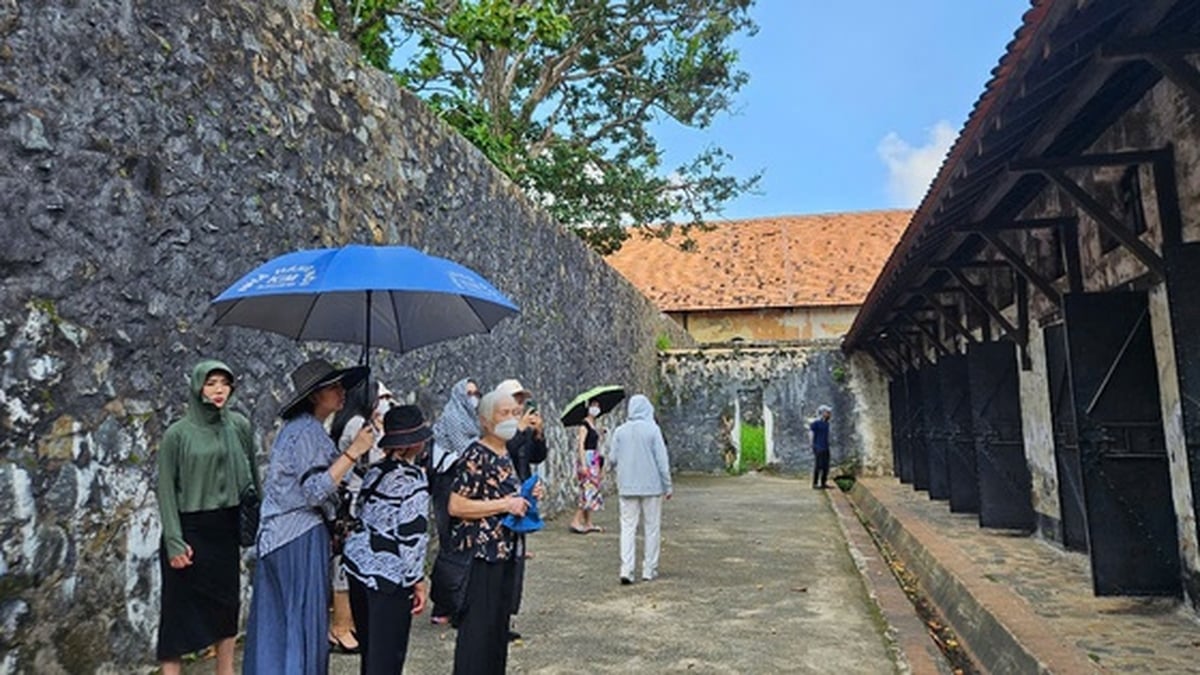
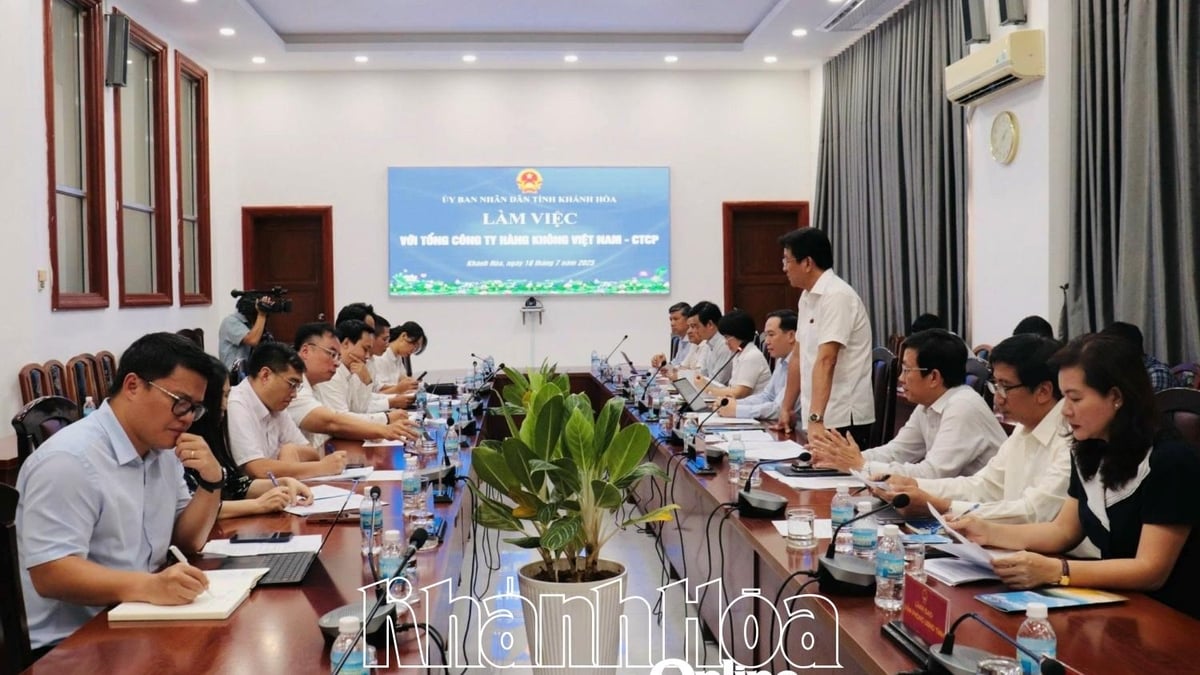
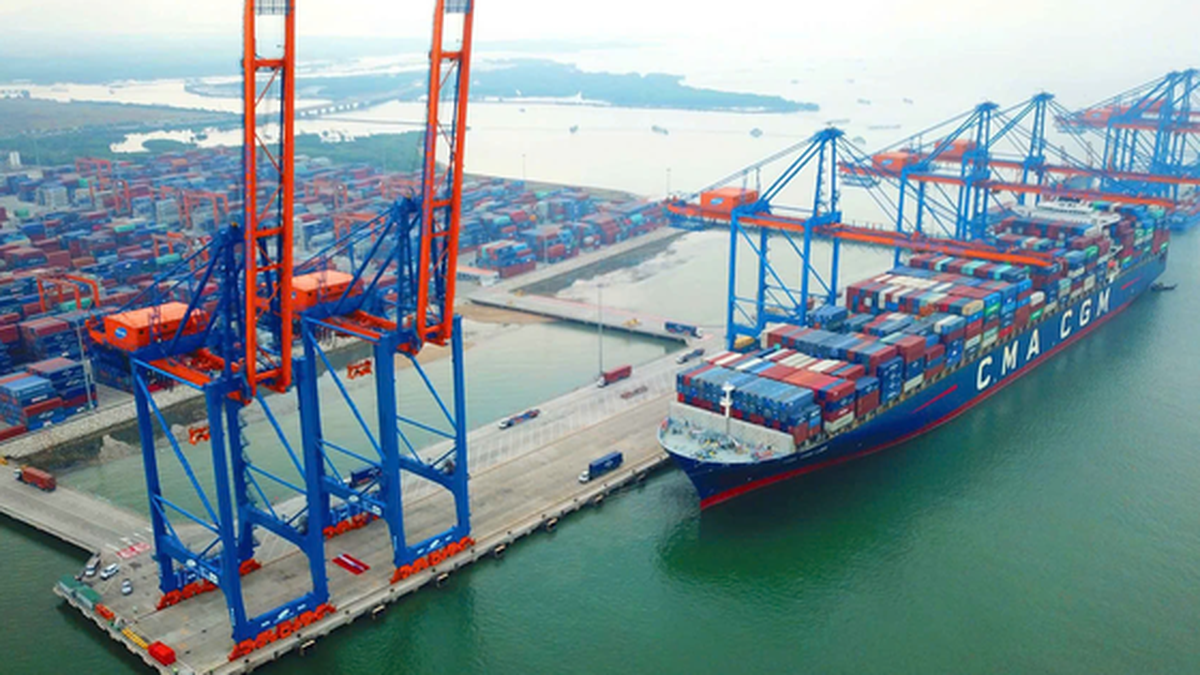
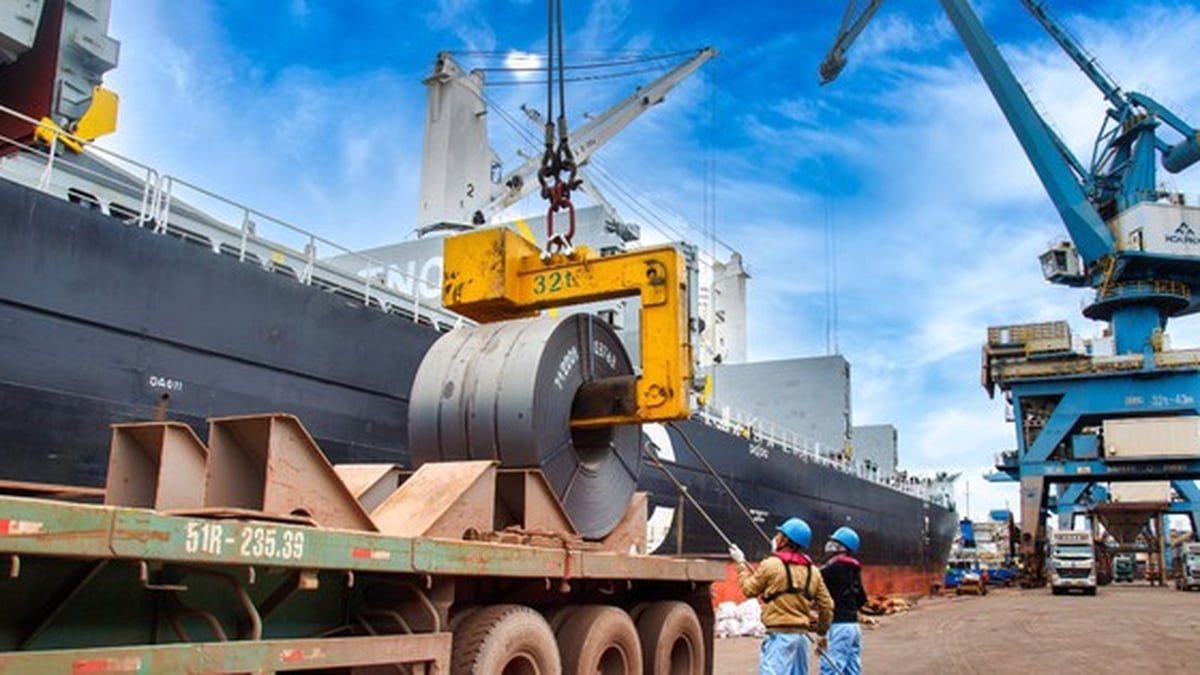
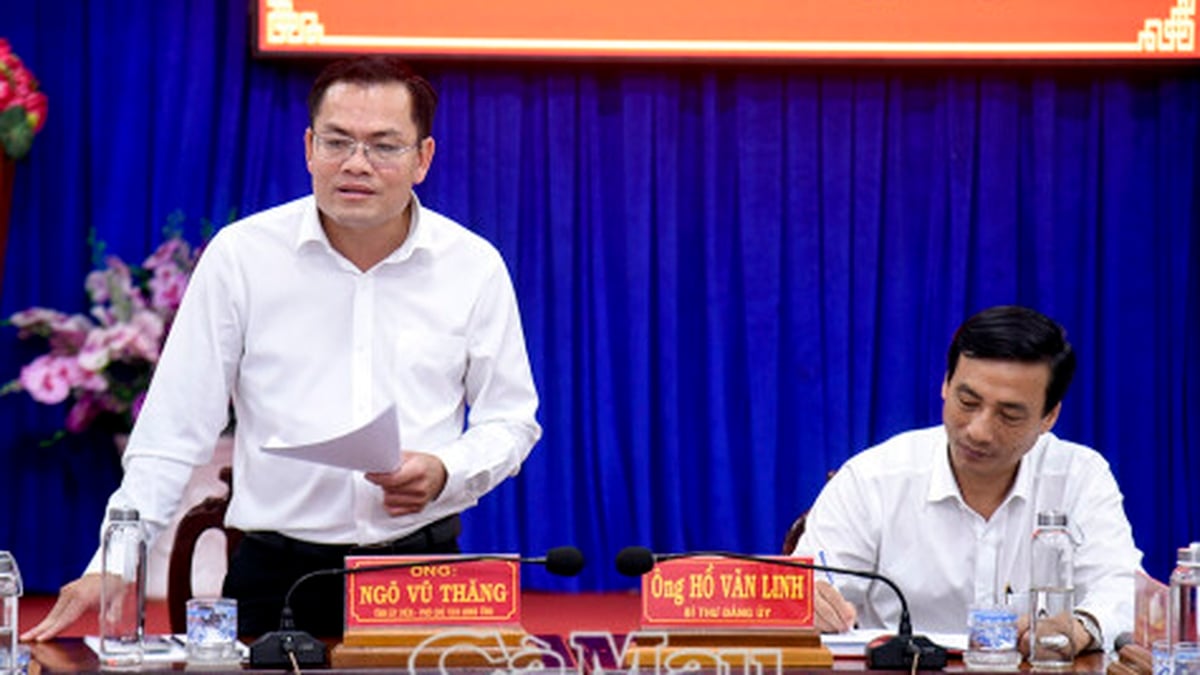
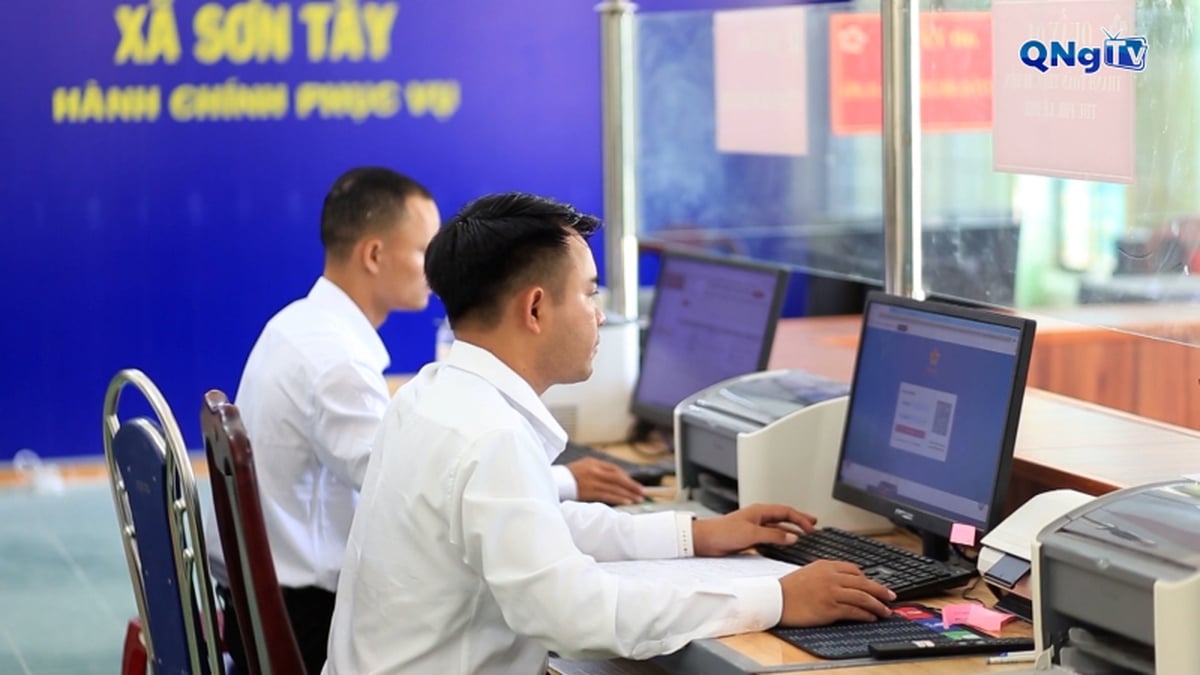
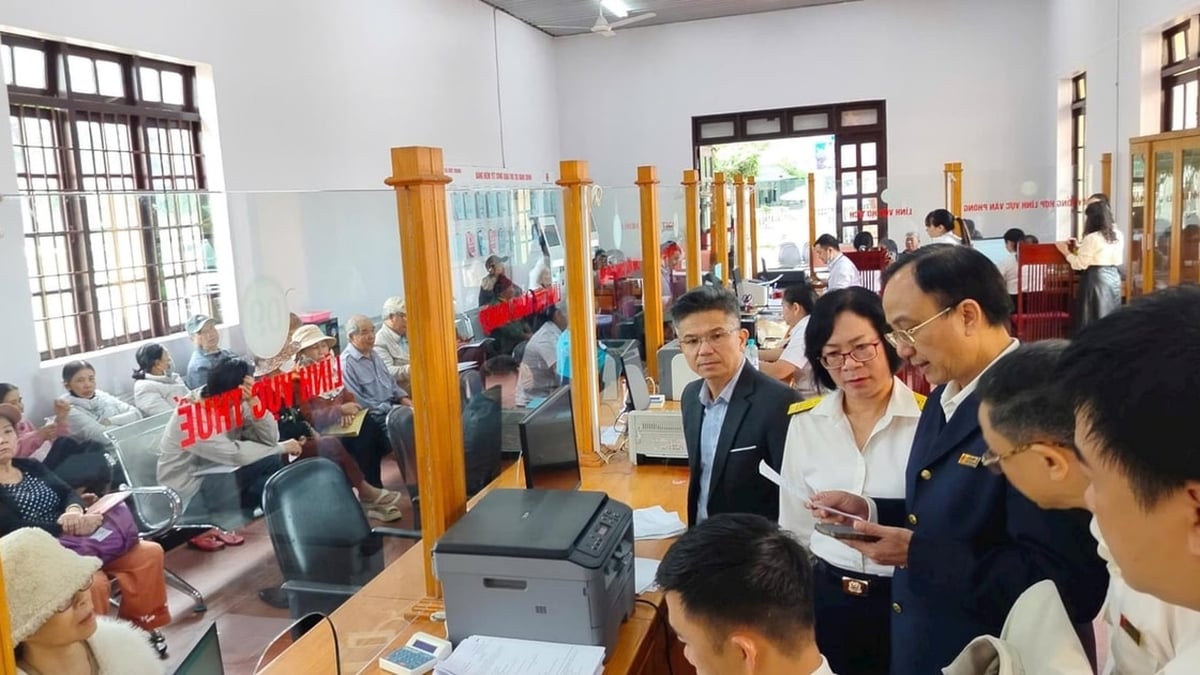
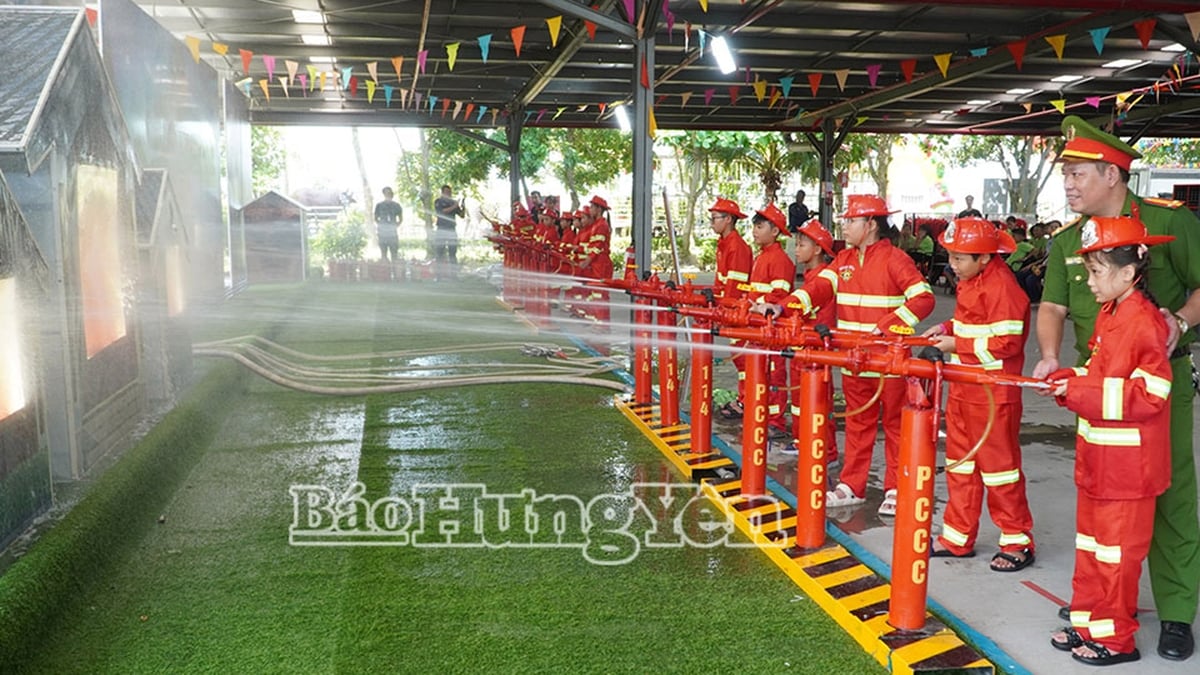

































































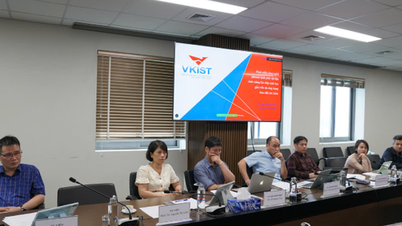
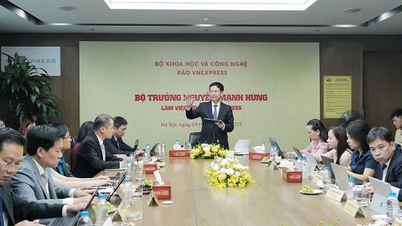
















![[Infographic] In 2025, 47 products will achieve national OCOP](https://vphoto.vietnam.vn/thumb/402x226/vietnam/resource/IMAGE/2025/7/16/5d672398b0744db3ab920e05db8e5b7d)





Comment (0)